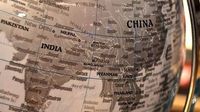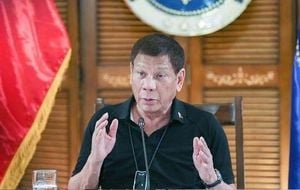As the sun set over South Asia on October 6, 2025, the uneasy calm between India and Pakistan was once again shattered by a volley of warnings, accusations, and strategic posturing that has left the region—and the world—on edge. The latest escalation began when Pakistan’s military issued a stark warning to India, cautioning that any renewed conflict between the nuclear-armed neighbors could result in "cataclysmic" devastation. This came in direct response to a series of strong public statements from New Delhi’s top leaders, including India’s army chief General Upendra Dwivedi and Defence Minister Rajnath Singh, both of whom delivered unusually blunt threats regarding Pakistan’s alleged support for terrorism and potential misadventures in the disputed Sir Creek area.
According to Hindustan Times, General Dwivedi warned, “Pakistan must stop supporting terrorism or risk losing its place on the world map.” Defence Minister Singh added fuel to the fire, stating that provocations in Sir Creek could “change history and geography.” These remarks, widely reported in Indian media, were not taken lightly by Islamabad. Pakistan responded by emphasizing its capacity to retaliate and called on the international community to take the threats seriously, warning that the consequences of renewed conflict could be disastrous for the entire region. The exchange comes on the heels of a serious escalation earlier in May, triggered by a deadly April attack in Pahalgam, Indian-administered Kashmir. That incident led to several days of cross-border strikes and air engagements before a U.S.-brokered ceasefire was announced on May 10, 2025—a temporary reprieve that did little to address the deep-seated animosities on both sides.
Analysts, as cited by Shia Waves, warn that the current rhetoric is more than just bluster; it raises the risk of a miscalculation that could spiral out of control. The presence of nuclear weapons in both countries’ arsenals means that even a minor incident has the potential to escalate rapidly, with catastrophic results. The dangers are not limited to the battlefield. Regional experts highlight the potential for massive humanitarian and economic fallout, including displacement of civilians, disruption of trade, closure of vital air corridors, and damage to critical infrastructure. In light of these risks, many are urging renewed diplomacy, confidence-building measures, and direct military hotlines to reduce the chances of an inadvertent escalation. International mediation, they say, is more crucial than ever.
But the picture is even more complicated. Recent remarks by India’s Chief of Defence Staff (CDS), General Anil Chauhan, have brought a new dimension to the already volatile situation. Speaking at the centenary celebrations of the Military Nursing Service in Delhi Cantonment on September 30, 2025, General Chauhan declared, “India will not be deterred by nuclear blackmail,” and stressed that radiological preparedness must be an essential component of national security. He went on to highlight India’s readiness against nuclear and biological threats, signaling a significant shift in India’s strategic doctrine. According to SIPRI 2025, India continues to modernize its nuclear triad—including land-based missiles, sea-launched ballistic missiles, and nuclear-capable aircraft—placing it among the few states actively expanding their nuclear arsenals.
India’s refusal to sign the Nuclear Non-Proliferation Treaty (NPT), coupled with its ongoing nuclear modernization, has drawn criticism from international arms control advocates. They argue that India’s actions undermine global nonproliferation efforts and set a dangerous precedent for other countries. As one analyst put it, “India’s integration of nuclear thinking into conventional military planning lowers the threshold for nuclear use and increases the risk of catastrophic miscalculation.” This dynamic, often referred to as a "security betrayal trap," forces regional rivals—especially Pakistan—to enhance their own capabilities, fueling an arms race and increasing the risk of crisis instability.
India’s approach, critics argue, is a double-edged sword. On one hand, it seeks to project strength and deter adversaries; on the other, it erodes the credibility of international nonproliferation regimes and complicates efforts to promote disarmament. The integration of nuclear capabilities with emerging technologies such as cyber warfare, space-based systems, and artificial intelligence adds yet another layer of complexity, making the regional security environment even more volatile. Without transparency measures or confidence-building initiatives, the risk of accidental escalation or preemptive miscalculation looms large.
Yet, from New Delhi’s perspective, these moves are part of a broader strategy to secure India’s place in a rapidly changing world. At the Aravali Summit in New Delhi, External Affairs Minister S Jaishankar addressed the 70th anniversary of the School of International Studies at Jawaharlal Nehru University, warning of rising global tariff volatility, supply chain risks, and shifting geopolitical dynamics. Jaishankar emphasized the need for India to maintain strategic autonomy and prepare for an increasingly fragmented and competitive world order. “We have to de-risk our exposures and engagements and yet, take risks when necessary. We have to appreciate that interdependence is both a stabilizer and at the same time a vulnerability,” he said, as reported by The New Indian Express.
Jaishankar outlined ten key pillars of India’s contemporary foreign policy, including intense regional diplomacy under the “Neighbourhood First” policy, a maritime focus via SAGAR (Security and Growth for All in the Region), and leadership in multilateral initiatives such as the International Solar Alliance and the Global Biofuel Alliance. In a veiled reference to Pakistan, he remarked, “We have multiple neighbours—some are clearly better than others. Hyphenation usually occurs with the not-so-nice ones.” He stressed India’s preference for de-hyphenation in global diplomacy, urging third countries to engage with India on its own merits rather than through the lens of bilateral rivalries.
Jaishankar also called for a shift from reactive diplomacy to proactive agenda-setting, arguing that India must operate in a multipolar environment while preparing to emerge as a pole itself. “Multi-alignment serves us well for now, but becoming a leading power is a natural objective,” he said. He further urged scholars to develop new strategic concepts and communicate India’s foreign policy narratives effectively to both domestic and international audiences. “Especially in this day and age, we cannot be impervious to public opinion. The power of analysis and articulation must address that societal need as India globalizes,” he noted.
The stakes could hardly be higher. While India’s leaders project confidence and assertiveness on the world stage, the risks of miscalculation and unintended escalation remain alarmingly real. The normalization of nuclear thinking in Indian strategic discourse, critics warn, represents a departure from traditional deterrence toward a more aggressive, prestige-driven posture. Without decisive international engagement and reforms to the global nonproliferation regime, the region may be heading toward a new era of arms racing and strategic instability.
For now, the world watches and waits, hoping that cooler heads will prevail and that diplomacy, rather than disaster, will shape the future of South Asia.




